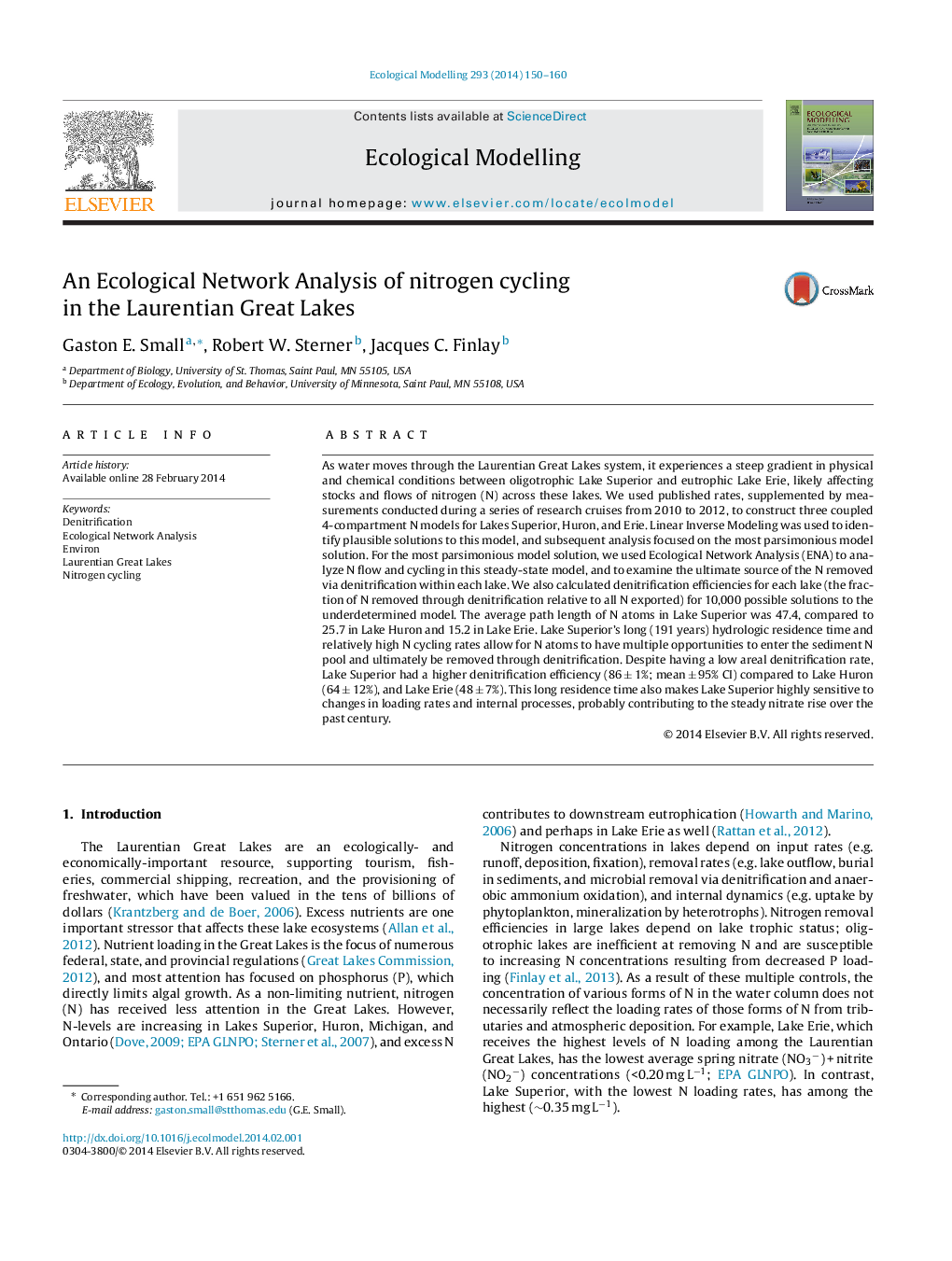| Article ID | Journal | Published Year | Pages | File Type |
|---|---|---|---|---|
| 4375800 | Ecological Modelling | 2014 | 11 Pages |
Abstract
As water moves through the Laurentian Great Lakes system, it experiences a steep gradient in physical and chemical conditions between oligotrophic Lake Superior and eutrophic Lake Erie, likely affecting stocks and flows of nitrogen (N) across these lakes. We used published rates, supplemented by measurements conducted during a series of research cruises from 2010 to 2012, to construct three coupled 4-compartment N models for Lakes Superior, Huron, and Erie. Linear Inverse Modeling was used to identify plausible solutions to this model, and subsequent analysis focused on the most parsimonious model solution. For the most parsimonious model solution, we used Ecological Network Analysis (ENA) to analyze N flow and cycling in this steady-state model, and to examine the ultimate source of the N removed via denitrification within each lake. We also calculated denitrification efficiencies for each lake (the fraction of N removed through denitrification relative to all N exported) for 10,000 possible solutions to the underdetermined model. The average path length of N atoms in Lake Superior was 47.4, compared to 25.7 in Lake Huron and 15.2 in Lake Erie. Lake Superior's long (191 years) hydrologic residence time and relatively high N cycling rates allow for N atoms to have multiple opportunities to enter the sediment N pool and ultimately be removed through denitrification. Despite having a low areal denitrification rate, Lake Superior had a higher denitrification efficiency (86 ± 1%; mean ± 95% CI) compared to Lake Huron (64 ± 12%), and Lake Erie (48 ± 7%). This long residence time also makes Lake Superior highly sensitive to changes in loading rates and internal processes, probably contributing to the steady nitrate rise over the past century.
Related Topics
Life Sciences
Agricultural and Biological Sciences
Ecology, Evolution, Behavior and Systematics
Authors
Gaston E. Small, Robert W. Sterner, Jacques C. Finlay,
